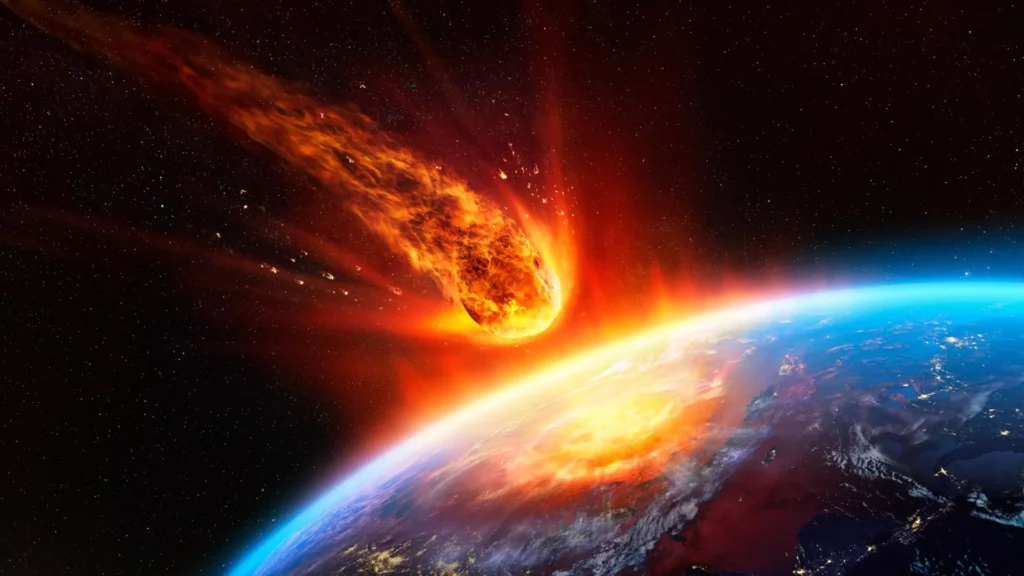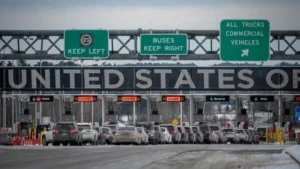NASA’s Bold Plan to Blast ‘Planet Killer’ Asteroid and Prevent Disaster

Around 66 million years ago, a massive asteroid struck Earth, wiping out an estimated 75% of all animal species, including the dinosaurs. This catastrophic event forever altered the course of life on the planet. Fast forward to the present, and scientists are preparing for the possibility of a similar disaster. With the advent of advanced space technology, plans are underway to prevent another asteroid apocalypse from endangering life on Earth.
NASA is tracking two asteroids, 2021 TK11 and 2024 TH3, set to pass near Earth on 14 October 2024. Although these space rocks will come relatively close, experts confirm there’s no risk to our planet. Instead, their flybys present a valuable scientific opportunity to study celestial objects formed during the solar system’s early stages.
Asteroid 2021 TK11, measuring around 22 feet wide, is about the size of a small airplane. Although classified as “potentially hazardous,” its distance of 1,900,000 miles from Earth ensures no risk. This asteroid will safely pass beyond the Moon’s orbit, offering a chance for detailed study.
- Size: 22 feet (small airplane size)
- Closest Approach: 1,900,000 miles
- Date: 14 October 2024
The second asteroid, 2024 TH3, measures approximately 52 feet wide, also similar to a small aircraft. This space rock will pass at a distance of about 2,860,000 miles from Earth. Though slightly larger than TK11, it poses no threat to our planet.
- Size: 52 feet (small airplane size)
- Closest Approach: 2,860,000 miles
- Date: 14 October 2024
NASA’s Jet Propulsion Laboratory (JPL) is closely monitoring these near-Earth objects. This careful tracking ensures that any potential threats are identified early. By observing these asteroids, scientists gain crucial insights into the solar system’s formation, examining both composition and movement of ancient space rocks.
While the close flybys are entirely safe, they underscore the importance of continuous monitoring and research. For researchers, these events provide an invaluable opportunity to gather data, improving our understanding of the universe and refining planetary defence strategies.
In light of the growing concern over Near-Earth Objects (NEOs), NASA released a comprehensive report last year titled the “National Preparedness Strategy and Action Plan for Near-Earth Objects and Hazards and Planetary Defence.” The plan details how NASA would respond if a potentially catastrophic asteroid were to head toward Earth. As outlined by The US Sun, the strategy involves launching a fleet of up to 1,000 spacecraft to intercept and deflect the asteroid, or potentially even deploying a nuclear explosive device in extreme situations.
Although no immediate threat is expected for at least the next century, NASA continues to track the most dangerous asteroids that could pose a risk to Earth. However, experts warn that there could be many unknown “planet killer” asteroids still lurking in space, making preparation crucial.
NASA’s first line of defense against a potential asteroid impact is the use of kinetic impactors—high-speed spacecraft designed to crash into an asteroid, knocking it off course. In 2022, NASA put this theory to the test with its $325 million Double Asteroid Redirection Test (DART). This mission targeted Dimorphos, a 580-foot-wide rock orbiting a larger asteroid named Didymos. The “Hera” spacecraft successfully collided with Dimorphos, slowing its orbit by 30 minutes.
Though neither Dimorphos nor Didymos posed any real threat to Earth, the mission was significant—it was the first time humanity had successfully altered the trajectory of an asteroid. However, the experiment also revealed potential new dangers. Experts discovered that the impact could cause smaller fragments to break off, potentially creating additional unpredictable hazards.
For larger asteroids, the challenge becomes even more daunting. NASA experts estimate that deflecting a space rock about 2,000 feet wide would require nearly 100 kinetic impactors. A planet-killer asteroid, similar to the one that wiped out the dinosaurs, would necessitate the launch of over 1,000 spacecraft.
If kinetic impactors aren’t enough, NASA has a backup plan straight out of a Hollywood movie—deploying a nuclear bomb to destroy the asteroid. According to NASA’s report, there could be situations where a nuclear explosive device (NED) is the only viable option to prevent a planet-wide disaster. “It is still possible that discovery of either even a relatively small object less than a few months to years before impact or a relatively large or fast-trajectory object would create a situation when only use of a nuclear explosive device would provide sufficient force to either deflect or disrupt the impactor in time to mitigate devastating effects on Earth,” the report states.
A study found that a nuclear bomb 200 times more powerful than the one used on Hiroshima would be needed to counter an asteroid approximately 650 feet in size. Aerospace engineer Brent Barbee told Live Science that a single appropriately sized nuclear device could deflect asteroids up to 1.5 kilometers wide.
Barbee added, “Space, of course, is a vacuum. So you don’t get a big pressure wave or any of the thermal effects of a terrestrial detonation. You get a whole lot of radiation all at once.
In the event that a “planet-killer” asteroid does hit Earth, the consequences would be catastrophic. Dr. Steven Goderis, a research professor of chemistry at Vrije Universiteit Brussel, co-authored a study examining the Chicxulub asteroid that wiped out the dinosaurs. He explained that the energy from the asteroid’s impact would convert entirely into heat, causing a massive explosion. “When the thing hits the target, it will more than explode; it will be vaporized,” Goderis said, according to a report from CNN.
NASA estimates that the Chicxulub asteroid, roughly the size of Mount Everest, hit Earth at a speed of 15.5 miles per second (25 kilometers per second). The impact created a vast cloud of dust and debris, which blocked out sunlight for years, leading to what scientists refer to as an “impact winter.” This drastic drop in temperature contributed to the mass extinction that followed.
While the risk of a planet-killing asteroid hitting Earth may seem distant, the preparations by NASA underscore the importance of being ready for any potential disaster. Whether through spacecraft, nuclear devices, or advanced tracking systems, scientists are working to ensure that humanity will not meet the same fate as the dinosaurs.
By testing these technologies now and refining their strategies, NASA is striving to protect the planet from what could be the ultimate extinction-level event.
With Thanks Reference to: https://www.newsx.com/space-science/nasas-bold-plan-to-blast-planet-killer-asteroids-and-prevent-disaster/ and https://www.moneycontrol.com/science/nasa-warns-of-two-giant-asteroids-coming-very-close-to-earth-today-are-they-going-to-collide-with-our-planet-article-12841168.html







